"Old men and comets have been reverenced for the same reason: their long beards, and pretenses to foretell events." -Jonathan Swift
Last week, I showed you the new, highest-resolution mosaic ever made of the near side of the Moon.
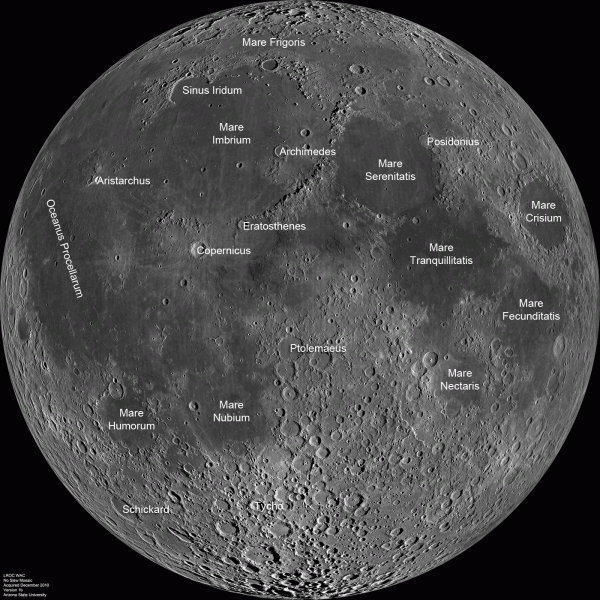
And I also showed you a small, somewhat unusual feature that I named "Snakey."

Snakey isn't all that impressive, of course. What might strike you as unusual, however, is that it appears to be a chain of craters, found close together, making a (roughly) straight line!
But there is a far better example. Much thanks goes to our reader, Tom Scrace, who was looking at this area of the Moon.
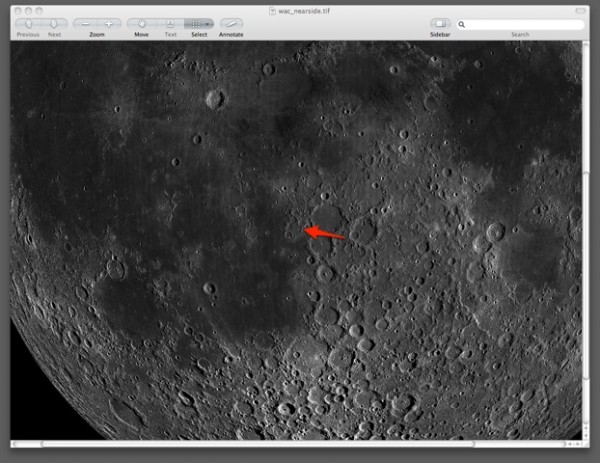
When you zoom in on this area, what do you find?
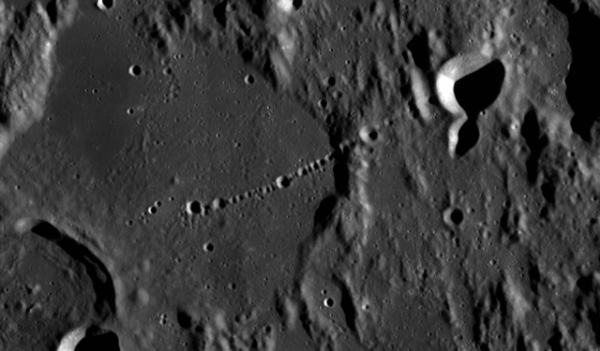
An amazingly long chain of craters! In fact, this particular crater chain -- or Catena -- has a name: Davy Crater Chain.
So what made it? Where do features like this come from?
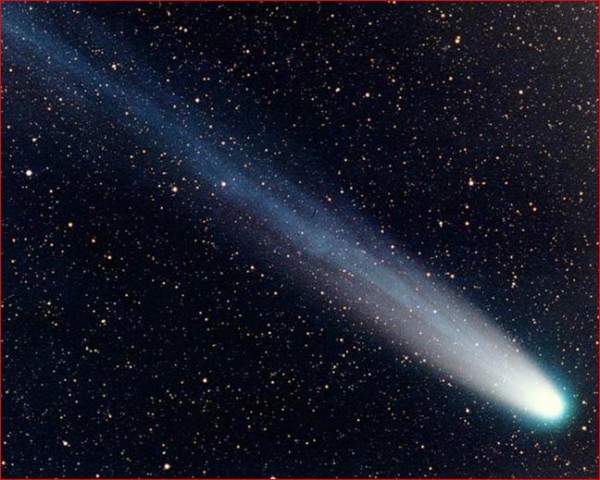
Believe it or not, we think that most of them come from comets!
How's that?
Comets are, of course, masses of rock and various ices, frozen together. When they get close enough to the Sun, the intense heat starts to melt some of the ices, and the Sun pushes some of the comet's matter away, forming a spectacular tail.
But every once in a while, the comet in question passes close to a large mass, like a planet or moon. What happens then?

Well, gravity happens. Or, in particular, tidal forces happen. You might think that gravity attracts objects towards one another, but it's a little more subtle than that. Gravity also cares how far away you are from what's attracting you. And when you're just a poor little comet, a planet or moon can pull the "closer" part of you with a greater force than the "farther" part of you.
The result?
Shown as it was imaged in 1994, Comet Shoemaker-Levy 9 is no more. While on a collision course with Jupiter, the now-deceased comet fragmented into more than 20 pieces, thanks to these tidal forces.
And although it was the first one we observed doing it, Shoemaker-Levy isn't the only one.
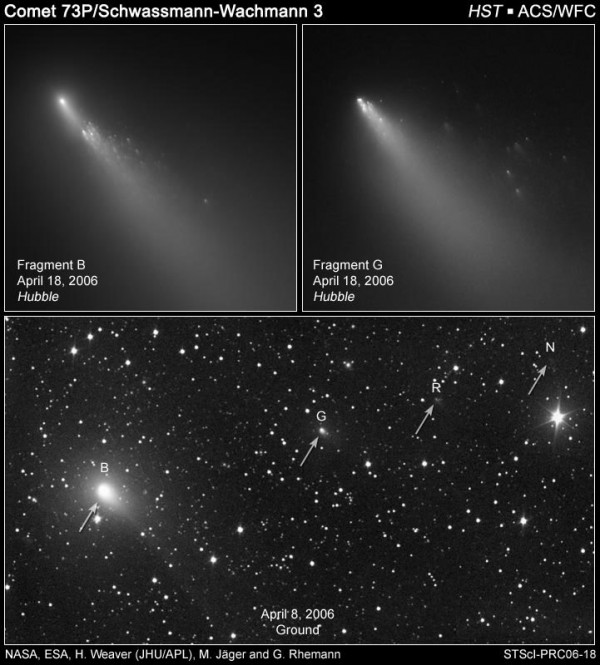
Comet Schwassmann-Wachmann 73P, imaged also in high resolution by the Hubble Space Telescope, is in the process of disintegrating! These crater chains are formed when a comet, normally torn apart by tides, has many of its fragments collide into the planet or moon at nearly the same time.
And although these are abundant on the Moon, crater chains are found all across the Solar System. They're also found on Mars, Mercury, and many of the larger moons, including Saturn's Enceladus, Jupiter's Callisto, and below, the 120-mile-long Enki Craters on Jupiter's Ganymede.
And that's where these great crater chains come from! So each time you find a feature like this, you're likely finding the burial ground of a comet, brought to its gloomy demise by the massive body it smashed into. It's absolutely amazing that we can not only find these things, but that we know how the Universe makes them!
It makes you wonder what the next object to get hit will be...
- Log in to post comments

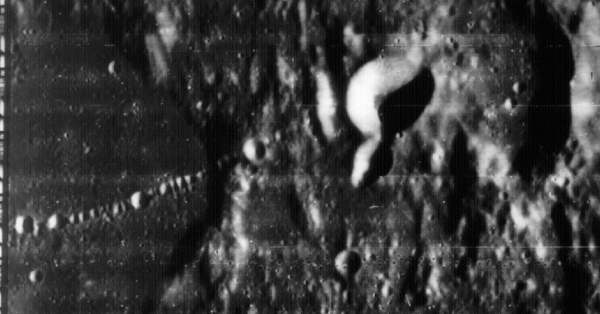
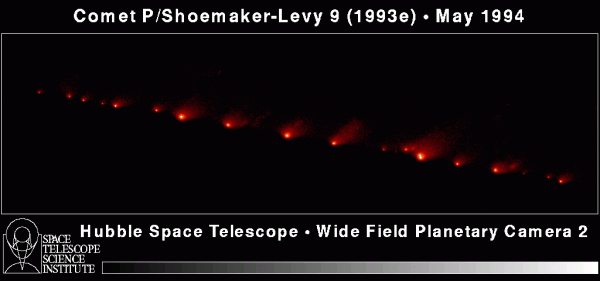
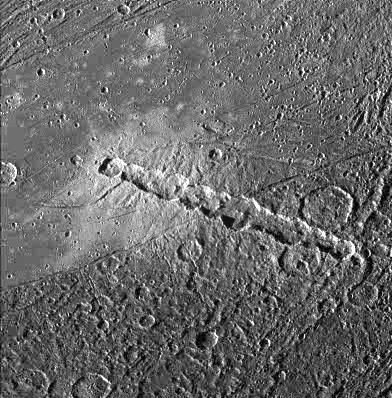
So--are there any crater chains on Earth?
I have a really dumb question - Whats the difference between a comet and an asteroid? Size/speed?
There probably are crater chains also on Earth:
http://www.boulder.swri.edu/~bottke/crater_chain/chain.html
On earth the chains can't be as spectacular as they are on the Moon, because the athmosphere burns the smaller fragments before they hit the dirt.
Thanks, Lassi.
When I look at all these craters, they seem to me to have been from impacts at a 90 degree angle. But I guess the result will be circular and symmetrical at most angles of impact. Has anyone found any oddly shaped ones? Anyones who just grazed the surface? Or am I just blind - is it possible or even easy to tell from a crater the direction the impactor had?
@ Ryan - Composition. Asteroids are cohesive, rocky bodies (though they can have other materials in them) that stay in one piece when subject to solar radiation. Comets are not cohesive, and when solar radiation rises above a certain intensity they start to lose dust and chunks of rock as the ice evaporates. This dust is pushed toward the edge of our solar system by the sun's radiation, giving rise to a tail.
Related to composition there's also orbits; comets only hang around longer if they have a highly elliptical orbit that only approaches the sun for a short period. A comet-like object in a circular orbit close to the sun would evaporate in short order.
The amazing thing is how nearly uniform in size the members of the chain appear to me. This probably says something about the mechanical properties of the parent body.
I also thing, the breakup must happen pretty soon bfore impact, else the fragments would be come too scattered to be recognizable as a chain. Shoemaker Levy's tidal encounter with Jupiter IIRC was only a couple of years before the impact, and the impacts were spread over many hours.
Another excellent post. Weak tidal force meets weak hydrogen bond. The winner: gravity. Now I'm curious as to the numbers -- maybe for an encore, Ethan will calculate each and compare. :)
Is this a description of the Roche limit? It makes sense that as comets heat, gas pressures can cause breakup... but Ethan, you mention primarily tidal forces.
"Believe it or not, we think that most of them come from comets!" âEthan
Does the impact profile differ based on the composition of the impactor, or is it solely a function of mass and angle?
BTW, great article.
No one posted this yet? Really, I'm the first?
http://www.craterchains.com/
Somewhat relatedly, another rather beautiful and unusual crater was just discovered on Mars by Mars Express: http://www.esa.int/esaSC/SEMTK5VTLKG_index_0.html
Thanks for the mention!
My lunar features:
http://cyberskald.com/repository/Lunar/lunar%20curiosity.gif
http://cyberskald.com/repository/Lunar/Deep_canyon.gif
Thanks for another good column. I stop by at least once a day. For this English instructor, your blog is among the best science resources on the Web.
Pronoein@13
You second location is Hadley Rille, where Apollo 15 landed.
Here's the linear feature on Mars that looked to me at the time like it might be a tunnel gully; I haven't seen any more recent images:
http://www.marsroverblog.com/discuss-a-puzzling-crack.html
Two links don't quite make a chain, but still:
http://en.wikipedia.org/wiki/Clearwater_Lakes
Anyone else notice the two large craters on either side of the crater chain on Ganymede?
@ BaisBlackfingers: Thanks for the responce - nice to know.
I noticed this kind of thing while running around Mars on Google Earth. Now I know what is is, thanks. There are lots of weird structures there, including the slick domal window-like appearance of many craters. So what causes that?
Thank you for the info, The Bobs.
nevertheless, looks amazing.... sometimes it's not important how it happens
Sometimes it is important. The lunar cometary impacts are small. In 1994 a huge comet did the same thing on Jupiter. Had Shoemaker-Levy 9 hit the Earth, we wouldn't be here talking about it. Knowing how, and when comets break apart is important, even for Earth-crossing asteroids.
The point is, this sort of thing happens all the time. We're due for a big one, in geological time scale that is. You can't predict it from statistics, but you can watch the skies for one. There's nothing we can do for a big one like the one that hit the Earth 65 million years ago, but we can at least try to do something about the smaller ones.
Are there craters like these on earth aswell?
I may have missed it, but I didn't read anything about these craters being the product of electrical plasma discharge.
Check out thunderbolts.info and learn about how the electric universe affects what we see.
There seems to be structures like these which are irregular in shape, deformed along their axes. The Carolina Bays are elongated pits, likely from a comet strike near Hudson Bay. Similar Bays are scattered across North America, all the way to the Texas panhandle. Look at a topo map of North and South Carolina and you will see hundreds of elliptical shallow depressions, called Bays, all aligned on an axis pointing roughly north by northwest. The axes converge in Canada near Hudson Bay. The research I've seen indicates a comet strike from over the pole into Canada at a very shallow angle, scattering pieces all over North America.